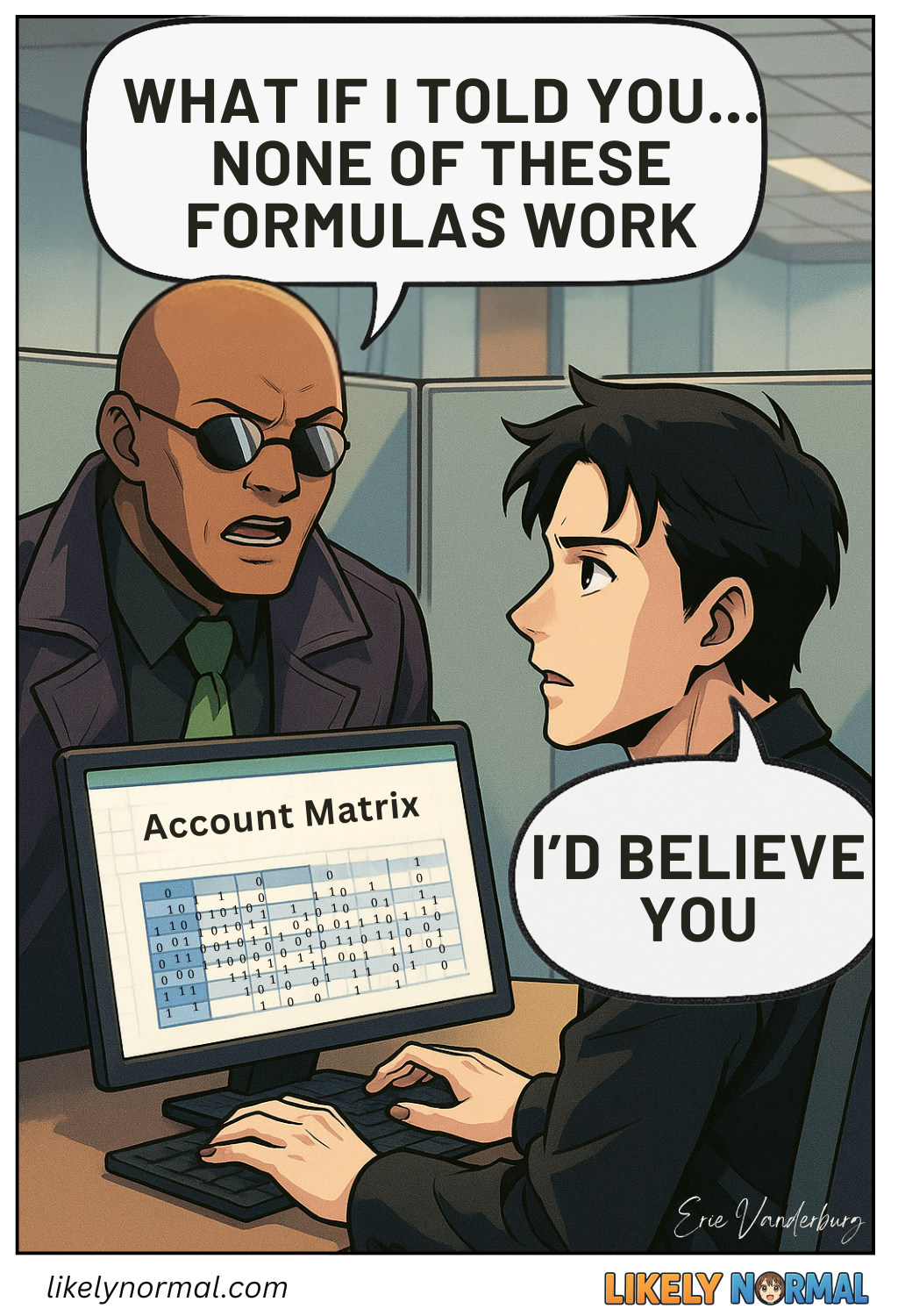The Spreadsheet Reloaded
Excel is a true productivity enhancer, at least, when used correctly. But like any powerful tool, it’s only as good as the person wielding it. We’ve all encountered those spreadsheets that make you pause and think, “Wait…that can’t be right.” The ones where someone’s creative formula work produces results that defy both mathematics and common sense.
The trouble often starts with simple overconfidence. Someone who just learned VLOOKUP suddenly thinks they’re a data wizard, building elaborate formulas that pull from the wrong columns or ignore error handling entirely. Before you know it, critical business decisions are being made based on numbers that are accidentally summing dates as integers or counting blank cells as zeroes in averages. The infamous “#REF!” error becomes less of a warning and more of a cry for help from the spreadsheet itself.
Then there are the formatting choices that make accountants weep. Merged cells that break sorting functionality, numbers stored as text because someone couldn’t be bothered to use the ‘Convert to Number’ option, and conditional formatting rules that highlight every other row in alternating neon colors for “readability.” The real gems are the files passed down through multiple users, where each person added their own “improvements” until the formulas look like modern art and the calculation time rivals a NASA supercomputer.
Perhaps the most dangerous spreadsheets are the ones that appear perfectly reasonable at first glance. Clean formatting, professional-looking charts, and formulas that seem logical…until you trace the precedents and discover the quarterly report is actually based on someone’s lunch order from 2019. These are the files that inspire false confidence, leading to boardroom presentations where executives nod sagely at metrics that are essentially digital folklore.
The beauty of Excel is that it will dutifully calculate whatever you ask it to, no matter how ill-advised. It won’t judge you for creating a circular reference that would make M.C. Escher proud, or for building a waterfall chart that somehow shows expenses exceeding revenue by 300%. That’s why the most important Excel skill isn’t mastering array formulas – it’s developing the humility to regularly ask, “Does this actually make sense?” and the wisdom to know when it’s time to start over with a clean worksheet.
After all, Excel doesn’t create bad data – people do. The software is just waiting patiently for us to get better at using it properly. Maybe someday we’ll all be Excel masters producing flawless workbooks…but until then, there will always be that one colleague whose “quick fix” turns the annual budget into an avant-garde performance piece.

Discussion ¬